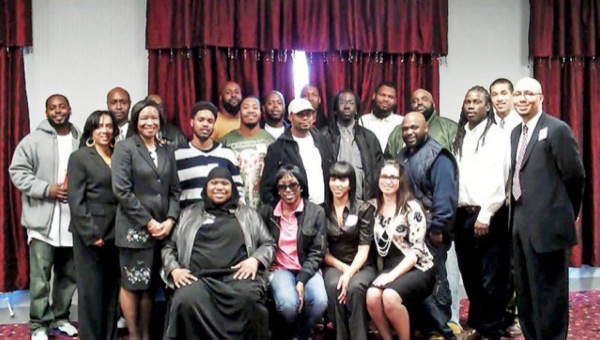
The People's Report
Study finds high rates of 'structural violence' in Wilmington
2 p.m., Nov. 16, 2012--Armed with clipboards and cameras, a group of 15 Wilmington residents — all black, many with criminal records, each one trained in research methods by a University of Delaware professor — canvassed their neighborhoods in early 2010 to study why their community has one of the country’s highest per-capita violent crime rates.
Their full study, the People’s Report, will be released next spring, but their data already paints a paradoxical finding, in which residents reported high rates of self-satisfaction and esteem, in addition to limited opportunities and numerous forms of structural violence.
Research Stories
Chronic wounds
Prof. Heck's legacy
“There has not been one research project in Delaware history that has research like this,” says Yasser Payne, an associate professor of Black American Studies, who served as principal investigator for the project. The unique study utilized 15 community members in place of graduate research students, a decision that stemmed from Payne’s interest in Participatory Action Research (PAR), in which members of a population under study conduct research in and on their own communities.
Such an innovative approach — consisting of multiple interviews and extensive field observations from the street corners of Wilmington — are what Payne calls “research for power.”
Tasked by the city’s HOPE Commission to document the relationship between structural opportunity and physical violence in Wilmington’s East Side and Southbridge sections, he and his PAR team surveyed 520 people between the ages 18-35, a representative sample of one-third of the area’s total population of 1,584 in that age group (based on 2000 census data), on the causes of crime and violence.
The silver lining
More than 80 percent of the survey respondents reported satisfaction with their lives. Nearly 95 percent labeled themselves “useful to have around.” Three in four felt a responsibility to improve their communities.
“Our data challenges status quo interpretations of low-income black youth,” says Payne. “Participants love themselves, love their communities, want to work, and want to be educated even in the face of overwhelming social and structural violence.”
It’s an “inherently counterintuitive” finding, he acknowledges.
In fact, the very same survey shows that nearly half have less than a high school education and only one-in-five holds full-time employment.
“So then how do you explain optimal psychological well-being,” Payne asks, rhetorically, adding that his next research study will aim to better understand this contradiction.
An affected community
Payne’s 18-page questionnaire, which examined all aspects of daily life and exposure to violence, found a deep connection between community violence and structural inequities.
In one of his interviews, he asked a 20-year-old man from the Eastside to define community violence.
“It means a community is basically disagreeing on something, and the only way they know how to solve their problems is through physical violence,” said Mohammad Dominique Chambers, the son of Payne’s lead research associate, Darryl Chambers.
Better known in the community by his nickname Pop-Pop Solid, the young Chambers was shot and killed in September 2011.
The tragedy was one of 27 homicides to take place in the city that year.
“Residents, by and large, report countless incidences of being directly and indirectly exposed to experiences of violence in the form of physical assaults, knifings, shootings, drug use and sales, and homicides,” Payne and his team state in their executive summary.
They also reported high rates of “structural forms of violence,” such as unemployment (64 percent), poor schooling opportunities (44 percent with less than a high school diploma), unhealthy living conditions (64 percent in low-income housing), and “failing,” “corrupt,” or “impotent” civic and political leadership.
Approximately 20 percent had been chased by gangs or individuals, about 25 percent had been attacked or stabbed with a knife, and nearly 20 percent had been victims of gunshots.
More than half (54.6 percent) had a relative who had been killed with a gun. Nearly 60 percent had lost a friend to gun violence, and on average, most of their friends’ deaths had occurred before their 18th birthday.
“Structural inequality is chiefly predictive of physical violence,” Payne concludes. “There’s no quick and easy fix, but to reduce the violence and, ultimately, the crime, residents need more and better opportunities, educationally, professionally and socially.”
Article by Artika Rangan Casini








